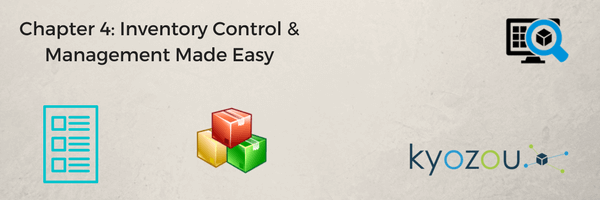Inventory Control & Management Made Easy
As a business owner and entrepreneur, inventory control and management is just one of those tedious things that needs to be taken care of. However, it’s also one of the most important parts of running a business. If your business means selling a product, your inventory is the lifeblood of what keeps it afloat. Mismanaged inventory can mean under and over-selling. This means disgruntled customers.
The golden standard of inventory management in today’s world is usually using a software to manage and automate it. Doing so frees up time for you to effectively sell your products without overly spending precious time counting and recounting stock. According to a 2017 report on small businesses, 8% of business owners don’t even track their inventory. Why? I’ve got no clue, but it’s a big mistake.

Organized? Looks it. Easy to manage without a software? Doubtful
The Problems and Remedies of Inventory Control & Management
Inventory organization comes with an array of problems. Depending on what method you’re using to manage your inventory, different issues can arise.
Problem: Too Much/Too little Inventory
Usually the top issue can be too much or too little inventory on hand. Too much inventory on hand means you could have spent that extra money on something like marketing. Too little means unsatisfied customer and long wait times.
Remedy:
A simple remedy for this is using data (hint: check out our previous article on data) to determine approximately how much you should keep on hand during certain times of the year. Establishing a guideline for minimum quantity on hand is a great practice to put in place. A minimum on hand quantity can help mitigate purchasing extra inventory at a later date or even save you from being out of stock. And if you are establishing a minimum quantity on hand, it’s best to use a FIFO (first in first out) method of managing inventory. This way the minimum quantity on hand gets sold first and you’re not left with a storage of old goods.
Problem: Flow Inaccuracy
If you’re using manual processes, determining the quantity of inventory going out and in and synchronizing that with existing inventory can prove to be a challenge.
Remedy:
Consider putting bar code scanners into place. This is a worthwhile investment as it will cut down on the time it takes to recount stock if a large shipment comes in or out of your warehouse. Doing scheduled stock counts will put everything together to keep your inventory control at its peak.
Problem: Multi Channel Selling
If you’re listing your inventory on more than one site, inventory control between channels can become a difficult task.
Remedy:
Handling this is complex. To handle multi-channel inventory management, most vendors turn to a 3rd party solution. There’s many type of providers that offer this but a good one will manage your online sales channels including sales off your website. They will also include more advanced inventory synchronizing such as managing kits and bundles.
Problem: Hardware Based Inventory
Having inventory data stored purely on hardware can be a big risk. In the event of theft or damage, all your inventory records can be wiped away. Your inventory must be updated in real time across all channels once an item is sold to prevent overselling.
Remedy:
Utilizing a cloud based software can prove to be a huge advantage in this regard. Not only will it protect records in the event of damage, it will allow you to have access to your inventory records from all over the world in many different locations.

Absolutely the last thing you want to happen if you’re not using the cloud.
Good Inventory Control Practices to Follow
Predict your demand. That one sentence makes it sound simple, but it isn’t. Unfortunately in today’s complicated business world it can prove to be one of the most challenging parts. Any good business strategy means tracking sales data over many sales cycles. Once you accumulate enough of this sales data you’ll generally have a decent idea of any specific trends, peaks and troughs in your yearly sales. Having a general guideline of what stock needs to be on hand serves to make your inventory control that much easier without having to guess.
While this isn’t exact, it can serve as a guideline for how much inventory needs to be hand, or at any times of the year when more is needed.
It also goes without saying, but pay close attention to your fast sellers. Keeping these items in good stock should be one of your top priorities.
Simply Automate it. With larger inventories, managing it becomes a huge hassle if you’re doing it manually. Inventory management systems can completely streamline your tracking process, simplify documentation and maintain or even improve accuracy beyond what’s achievable with a manual process. It’s also one of the biggest ways you can save a load of time in your business. Inventory management systems can save you manpower to utilize more effectively doing other jobs and can reduce overhead costs. If you’re inventory is large, we highly recommend a system to automate the process for you.
Wrapping It Up
Managing your inventory doesn’t have to be this incredibly complicated and difficult task. Nowadays, using software to automate the process is almost the norm. However if you’re not, using the guidelines listed above can be beneficial and reduce some of the time spent on it. As your business grows, you’ll run into different challenges in terms of managing your inventory. You’ll need to research different solutions to see what’s best for your current situation. These practices serve as a guideline to understanding your challenges and needs.




